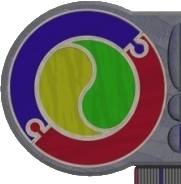 |
|
 |
| |
Computer Systems
eXercise #5
Architectures and Data Communication
- Regarding the INFORMATION BOTTLENECK found with most Von-Neumann
based systems:
- Explain what causes the bottleneck
- Outline 3 possible things thaat could help alleviate the problem
- Why would it not be common for all devices to be connected directly
to all other devices inside a computer?
- Using a diagram, outline the differences between PARALLEL and SERIAL
communication
- Outline the different roles played by the DATABUS and the CONTROLBUS
- Regarding SERIAL COMMUNICATIONS PROTOCOLS
- List as many components of a simple protocol as you can
- Comment on the consequences of two communicating parties failing
to match protocols
- Outline the PARITY error detection scheme, including how it
is used along with any shortcomings the scheme has inherent in
it.
- Suppose a modem transmits using the following: 14.4Kbps, 8data,
no parity, 1 start, 3 stop, 2 rest.
- If the modem transmits for exactly 10 seconds, how many characters
have been sent (MAXIMUM)?
- How long would it send (MINIMUM) to sent a 1Mb Text File?
- What factors can effect the data tramsmission rate?
- If the following byte stream was received under ODD PARITY:
1101 0011 1010 1011 1111 0111 0111 1111
- Did the transmission proceed without error?
- Is there any way to be sure?
- Suppose we wish to send the following Packet of 3 bytes:
65 42 8
- Calculate the 2 Checksum Bytes that would also be sent
- Suppose your packet arrived safely, SHOW that it arrived
safely by verifying the checksum
- For each of the following transmission requirements, select a communications
medium that would be the CHEAPEST for the job:
- Voice link only
- 2 way full motion video conferencing
- ATM transactions
- For each of 1..3 comment on the INTEGRITY requirements
- When deciding how to represent digital data on analogue wires,
1's and 0's were encoded as different relative voltages. Why was a
value other than 0 volts chosen to represent a zero?
|
|
|
 |
|
 |
|


